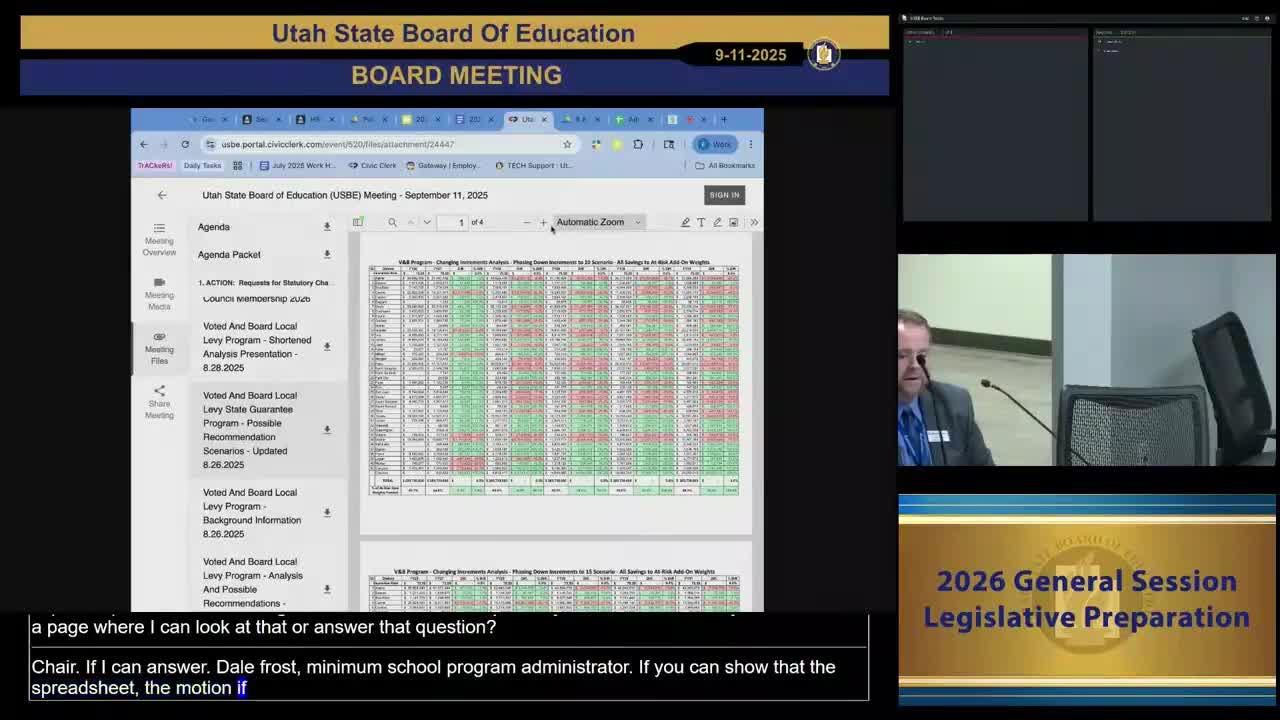Members Debate Local Authority Budgeting and Taxation Transparency Issues
September 15, 2025 | Financial Operations , Utah Board of Education, Offices, Departments, and Divisions, Organizations, Utah Executive Branch, Utah
This article was created by AI summarizing key points discussed. AI makes mistakes, so for full details and context, please refer to the video of the full meeting. Please report any errors so we can fix them. Report an error »

During a recent government meeting focused on the preparation for the 2026 General Legislative Session, a significant discussion emerged regarding local education funding and budget allocation practices in Utah. The conversation centered on a proposed five-year phase-in plan aimed at reducing guaranteed funding increments from 20% to 15%, with the intention of reallocating those funds to support at-risk students.
The proposal, while designed to maintain a net zero impact statewide, raised concerns among board members about its implications for local education agencies (LEAs). Member Carey highlighted the confusion surrounding how local districts budget for anticipated funds from truth in taxation, which occurs in August. She pointed out that districts often preallocate these funds in their budgets before the tax increase is officially voted on, leading to potential financial discrepancies.
Carey emphasized the importance of transparency in how districts communicate their funding needs during truth in taxation meetings. She expressed a desire to find a solution that would not penalize districts for being upfront about their spending plans while also ensuring that they do not commit to expenditures without secured funding.
The discussion underscored the complexities of local budgeting processes and the need for clarity in financial planning. As the board continues to navigate these issues, the outcomes of this proposal could significantly impact how education funding is managed in Utah, particularly for at-risk students. The next steps will involve further deliberation on how to balance transparency with fiscal responsibility in local education budgets.
The proposal, while designed to maintain a net zero impact statewide, raised concerns among board members about its implications for local education agencies (LEAs). Member Carey highlighted the confusion surrounding how local districts budget for anticipated funds from truth in taxation, which occurs in August. She pointed out that districts often preallocate these funds in their budgets before the tax increase is officially voted on, leading to potential financial discrepancies.
Carey emphasized the importance of transparency in how districts communicate their funding needs during truth in taxation meetings. She expressed a desire to find a solution that would not penalize districts for being upfront about their spending plans while also ensuring that they do not commit to expenditures without secured funding.
The discussion underscored the complexities of local budgeting processes and the need for clarity in financial planning. As the board continues to navigate these issues, the outcomes of this proposal could significantly impact how education funding is managed in Utah, particularly for at-risk students. The next steps will involve further deliberation on how to balance transparency with fiscal responsibility in local education budgets.
View full meeting
This article is based on a recent meeting—watch the full video and explore the complete transcript for deeper insights into the discussion.
View full meeting

